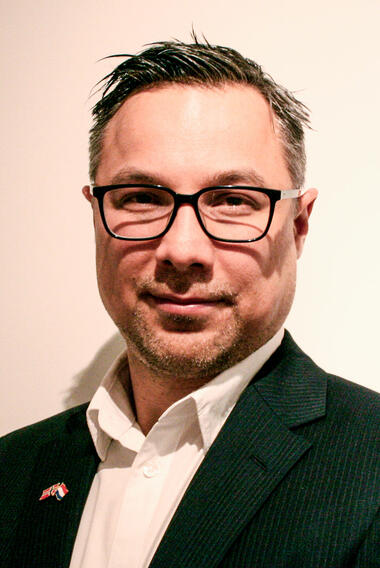Steven Bos is defending his thesis for the degree philosophiae doctor (PhD) at the University of South-Eastern Norway.
The doctoral work has been carried out at the Faculty of Technology, Natural Sciences and Maritime Sciences in the PhD programme in Technology.
Everyone is welcome to follow the trial lecture and the public defence.
Summary
For more than 80 years computers use a binary alphabet of two symbols: 0 and 1. Imagine making English sentences with just two letters! With one extra symbol, a ternary alphabet, modern computers can theoretically become smaller, more energy efficient, faster and at lower cost.

The first part of this doctoral thesis presents a historical analysis why the binary alphabet was chosen and how practical rather than theoretical aspects formed this decision. It is further shown that there is an increasing need to revisit this decision due to fundamental problems.
The second part discusses a long-known alternative, the ternary computer. Benefits of ternary alphabets are presented across seven application domains such as energy consumption, cyber security and design complexity. In addition, some of the critique in literature is shown to be outdated as the industry continuous to adopt ternary and higher radix alphabets as formal standards for storage and communication.
In the last part Electronic Design Automation (EDA) tools and practical building blocks of a ternary computer are proposed. The thesis presents the first browser-based EDA tool to design and verify binary, ternary and hybrid (mixed radix) logic integrated circuits (IC). Several designs made with the tool have been tested using automated workflows on industrial verification tools and successfully taped-out as actual chips. The second tool allows physical experimentation with memristors to test suitability for ternary computers. Memristors are extremely tiny and promising devices to store three or more stable states. Both tools are open sourced and include a permissive license for commercial usage.
The results of this thesis enable an exciting future beyond zeros and ones. The focus on efficiency rather than simplicity and a much lower entry barrier sets the stage for many interesting and fairer computer alphabet comparisons.
The proposed ternary instruction set architecture (ISA) and ternary microprocessor show that complex designs are now in the realm of practical possibilities.
